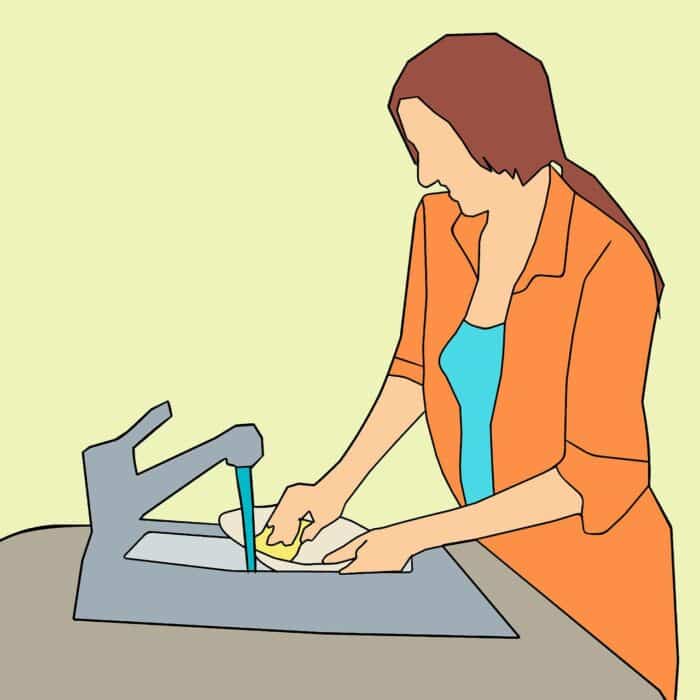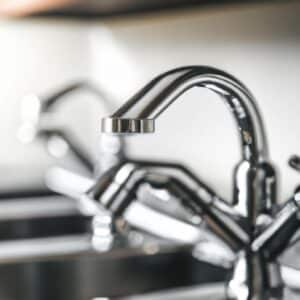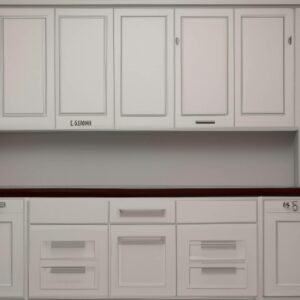Have you ever faced a greasy mess in your kitchen and wondered what cleaning cloths you should use to tackle it? Finding the best kitchen cleaning cloths can be overwhelming, from paper towels to microfiber cloths. But don’t worry. We’ve got you covered! In this ultimate guide, we will provide all the tips and tricks you need to get your kitchen sparkling and smelling fresh with ease. From the benefits of using cleaning cloths to the ultimate kitchen cleaning kit, there is something here for everyone. So read on to find out the best types of kitchen cleaning cloths and how to use them effectively.
Paper Towels
Paper towels are a common and highly effective way to tackle tough messes in the kitchen. They are handy for cleaning spills, wiping countertops, and drying dishes. They’re also great for wiping up bacteria and germs on surfaces. Despite their convenience, paper towels have their disadvantages. They can be expensive to replace regularly and could be more eco-friendly. Plus, they can be abrasive and can scratch delicate surfaces.
Using a new one each time is essential when cleaning with paper towels. Start by wiping the surface with a damp cloth to remove dirt and grime. Then, use a paper towel to dry the surface. If you’re using a cleaner, apply it directly to the paper towel and wipe down the surface. Discard the paper towel when you’re finished. For tougher messes, use a cleaner specifically designed for the job.
Microfiber Cleaning Cloths
Microfiber cloths are a fantastic cleaning tool that can tackle even the toughest messes in your kitchen. Not only are they highly absorbent, but they are also incredibly versatile and easy to use. Microfiber cloths won’t scratch surfaces and can trap dirt and bacteria more effectively than paper towels or other cleaning cloths. Plus, they are machine washable so that you can reuse them repeatedly.
When it comes to using microfiber cloths for cleaning, several different types are available. Each type is designed for a specific purpose and will be more effective for certain tasks than others. For example, there are soft microfiber cloths that are ideal for wiping down glass surfaces, and there are thicker ones that are great for scrubbing away tough stains. Microfiber cloths are also treated with special antibacterial agents to help eliminate germs and bacteria.
Using microfiber cloths for cleaning is simple. All you have to do is wet the cloth, apply a cleaning solution, and then gently rub the cloth over the surface. The cloth will pick up dirt and grime and leave your kitchen sparkling clean with minimal effort. For tough messes, elbow grease may be required.
Fabric Softener
Fabric softener is an effective tool for keeping your kitchen clothes smelling fresh and soft. From freshening the kitchen towels to removing tough stains, fabric softener is an essential part of kitchen cleaning. The best part is that fabric softener is readily available and reasonably priced, so you don’t have to break the bank to get your kitchen looking and smelling its best. Here are the benefits of using fabric softener and the steps you need to take to make the most of it:
Benefits of Using Fabric Softener:
Fabric softener works wonders on kitchen cloths, making them soft and fluffy while eliminating impurities. It also makes your kitchen clothes smell great, leaving a pleasant scent in your kitchen. Fabric softener is also economical, so you’ll be able to use it without worrying about your budget.
Steps for Using Fabric Softener for Cleaning:
Using fabric softener for cleaning is easy. Add a capful of fabric softener to a bucket of warm water. Then, soak the kitchen cloths in the bucket and let them sit for a few minutes. After that, remove the clothes from the bucket and wring them out. Finally, hang the clothes up to dry.
Tips for Using Fabric Softener:
When it comes to using fabric softeners, there are a few tips you should keep in mind:
- Ensure you use too much fabric softener too much can make your kitchen clothes greasy.
- Use an unscented fabric softener to keep your kitchen smelling natural.
- Wash the kitchen clothes with fabric softener on a regular basis this will help to keep them as soft and fresh as possible.
Kitchen Cloths
Kitchen cloths are an essential part of any home cleaning kit and can be used to tackle various tasks. Whether wiping down the counter, cleaning a sticky mess, or washing dishes, the right kitchen clothes can make the job easier and faster. From traditional terry cloths to all-purpose microfiber towels, a variety of kitchen clothes are available to suit every need.
Terry cloths are soft, absorbent, and perfect for wiping down the counter or absorbing spills. Microfiber cloths are great for cleaning tough messes and can be used with or without cleaning products. For washing dishes, choose a cloth made from cotton or microfiber for maximum absorbency. For tough messes, use a scouring pad for a deep clean. Whatever kitchen cloth you choose, make sure to launder it regularly and replace it when it’s showing signs of wear.
Microfiber Towels
Microfiber towels are a great way to keep your kitchen clean and sparkling. These towels are highly absorbent and can easily remove tough messes such as grease and grime. They also dry quickly, so you don’t have to worry about mildew or bacteria growth. Plus, they can be reused many times before needing to be washed.
When washing dishes with microfiber towels, use mild detergent and lukewarm water to prevent staining. Also, hanging your towels after each use is essential to avoid bacteria growth. You also don’t want to use fabric softener with your microfiber towels, as it can affect the fibers’ability to absorb.
To clean other surfaces around the kitchen, dampen a microfiber towel and use it to wipe down countertops, appliances, cupboards, and more. Microfiber towels are great because they don’t leave any streaks or lint behind. Plus, they can easily remove dirt, dust, and other debris without leaving any scratches.
When you’re finished cleaning, give your microfiber towels a good rinse before using them again. This will help them last longer and remain in top condition. With proper care, microfiber towels can easily outlast paper towels by a wide margin.
If you want to know more about microfiber cloths, you can watch this video:
Cleaning Kit
Stocking up on the right cleaning supplies and materials for your kitchen is essential for efficiently tackling tough messes. But what is the ultimate cleaning kit to make your kitchen sparkle and smell fresh? The answer lies in combining paper towels, microfiber cloths, fabric softeners, kitchen cloths, microfiber towels, and laundry detergent. Here is what you need and how to use them.
Paper towels are the most convenient way to clean up messes in the kitchen. Their absorbency is second to none, and they come in handy for wiping down countertops and tables. But they are not without their drawbacks. They can be wasteful and costly if not used carefully. The best way to clean up with paper towels is to use them sparingly: use one towel per mess, and try to use as little as possible.
Microfiber cloths are great for tackling tough messes and wiping down surfaces. They come in various sizes and are made from a synthetic material that is super absorbent. The material also traps dirt and bacteria, which makes it perfect for cleaning the kitchen. When using microfiber cloths, it is best to use a damp cloth and then a dry one to prevent bacteria from spreading.
Fabric softeners can be used to clean and disinfect surfaces in the kitchen. It’s a great alternative to harsh chemicals, as it’s non-toxic and won’t damage surfaces. Add a capful of fabric softener to a bucket of hot water and use a cloth to wipe down surfaces and appliances. Just be sure to rinse thoroughly afterward.
Kitchen cloths are the perfect choice for scrubbing pots and pans. Typically made from cotton, they are solid and durable and can be washed and reused multiple times. For best results, use a kitchen cloth with soap and hot water.
Microfiber towels are great for washing dishes, as they are highly absorbent and won’t scratch delicate surfaces. Dampen the towels and add a few drops of dish soap to use them. Then use the towel to scrub dishes and rinse thoroughly and gently.
Cleaning with laundry detergent is a great way to remove tough stains. Add a few drops of detergent to a bucket of hot water and use a cloth or sponge to scrub the stained area. It is best to let the detergent sit for a few minutes before scrubbing for tough messes.
To make your life easier, assemble a kitchen cleaning kit and keep it handy. This kit should include paper towels, microfiber cloths, fabric softeners, kitchen cloths, and laundry detergent. This way, you’ll always have the supplies to tackle tough messes efficiently.
Cleaning Supplies
No matter how challenging the mess is, having the right cleaning supplies can make all the difference in your kitchen cleaning. From dishwashing detergent to cleaning cloths, knowing precisely what to use and when can be overwhelming. Here are some of the most common kitchen cleaning supplies and their tips.
Dishwashing Detergent: This is one of the most essential cleaning supplies for the kitchen, as it can help eliminate grease and grime on pots, pans, and dishes. Make sure to use a gentle detergent that won’t damage your dishes or leave behind any residue.
Cleaning Cloths: From paper towels to microfiber cloths, having the right kind of cleaning cloth is essential for tackling tough messes. While paper towels are great for quick cleanups, microfiber cloths are great for scrubbing hard-to-clean surfaces. They are also highly absorbent and can help reduce the need for chemical cleaners.
Fabric Softener: For those tough kitchen messes, fabric softener can make all the difference. Fabric softener not only helps lift and clean grime, but it also leaves your kitchen smelling fresh and clean. Just be sure to use it sparingly and only on surfaces that won’t be damaged.
Kitchen Cloths: Kitchen clothes are a must-have for any kitchen. They can be used to wipe down surfaces, remove grease and grime, and dust furniture and counters. They are also great for absorbing spills and come in various colors and patterns to match your kitchen decor.
Microfiber Towels: Microfiber towels are a great way to tackle tough messes and get your dishes sparkling clean. They are also super absorbent, so they can help reduce the need for chemical cleaners. Just be sure to use them with a gentle detergent and rinse them thoroughly after each use.
Cleaning Kit: Putting together a kitchen cleaning kit is a great way to make sure you have all the cleaning supplies you need in one place. A basic kit should include dishwashing detergent, cleaning cloths, fabric softener, kitchen cloths, microfiber towels, and a scrub brush.
With the right cleaning supplies, you’ll be able to tackle tough messes with ease and keep your kitchen sparkling and smelling fresh. With the right supplies and a bit of elbow grease, you’ll be able to get your kitchen back to looking its best in no time.
Tough Messes

Cleaning up kitchen messes can be a daunting task. From sticky, gooey messes to splattered food, tackling tough messes can be enough to make you want to give up. But with the right tools and cleaning techniques, you can make even the toughest messes easy to manage.
When it comes to tough messes, the most important thing is to act fast. The longer the mess is left on a surface, the harder it will be to clean it. So, no matter what mess you are dealing with, start cleaning it as soon as possible.
For tough messes, you’ll need to choose the right clothes. Choose a cloth that is strong and absorbent. A microfiber cloth is usually a good choice as it can easily pick up large amounts of liquid. You can also try using a kitchen cloth designed for tough messes.
Once you have chosen the suitable cloth for the job, it is time to start cleaning. Start by blotting the mess with the cloth and then use a gentle cleaning solution to loosen any debris and help to remove any residue. Once the mess is gone, it is time to finish the job by wiping the surface with a damp cloth.
Using the proper cleaning cloths and techniques to tackle tough messes doesn’t have to be intimidating. Armed with the proper tools and supplies, you can make even the toughest messes easy to manage.
Laundry Detergent
Laundry detergents can be a great addition to your kitchen cleaning kit, especially when tackling tough messes. They are formulated to help break down oils and grease, plus they also help to soften fabrics and reduce odors. That means that laundry detergent is the perfect choice for cleaning up greasy messes in the kitchen.
The advantages of using laundry detergent for cleaning go beyond tackling tough messes; it can also help sanitize surfaces and kill germs. This makes it an excellent choice for cleaning kitchen counters, tables, and other hard surfaces. You can use laundry detergent to keep your kitchen sparkling and smelling fresh with just a few simple steps.
When using laundry detergent for cleaning, it’s essential to read the directions carefully. Some laundry detergents are designed for use on fabrics, while others are designed specifically for hard surfaces. Some laundry detergents are designed to dissolve quickly, while others require a bit of scrubbing. For best results, select the laundry detergent that is best suited for the job.
When using laundry detergent for cleaning, it’s also essential to use the right amount. Too little will not get the job done; too much can cause sudsing and residue. A good rule of thumb is to use two tablespoons of laundry detergent for every gallon of water you use when cleaning.
Finally, when using laundry detergent for cleaning, it’s important to avoid mixing it with other cleaning products. Some chemicals can react and create dangerous fumes, so sticking to the laundry detergent is necessary.
Following these tips, you can use laundry detergent to keep your kitchen sparkling and smelling fresh.





